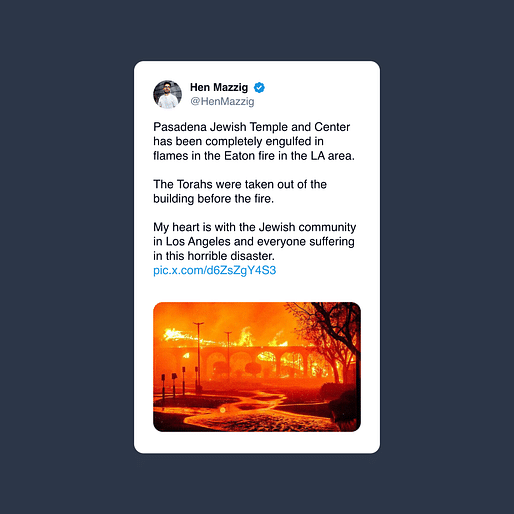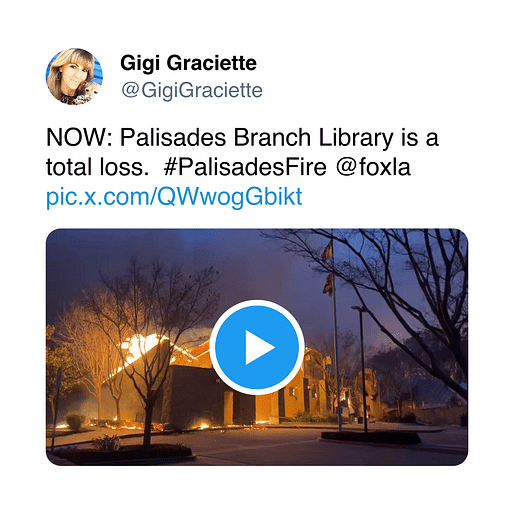

The dangerous fire situation unfolding on the ground across Los Angeles has captured the attention of Archinect as we try to keep on top of potential damage to homes, businesses, and historic structures in the Pacific Palisades, Altadena, and Pasadena, which is also our home.
What appears on track to be the greatest single natural disaster in terms of residential structures burned (at this hour the minimum number is being reported at around 1,000 by the LA Times) is, of course, going to affect much of the historic architecture that has granted the city its cultural identity in ways that are almost impossible to recount or recover.
In the Palisades Fire’s crosshair are many Richard Neutra designs, including his Case Study House #20 and Hees House from 1950. Several important Cliff May designs, the Eames House, and the beloved Getty Villa exist there as well. In Altadena/Pasadena, many quintessential Greene & Greene buildings—including the Gamble House—and the Huntington Library are currently under threat as the Eaton Fire moves south along the 210 Freeway.
A tremendous gratitude is owed to the courageous men and women of the Los Angeles Fire Department who have been fighting bravely to protect lives and property throughout the night and into this afternoon.
We will continue to update this post with critical information as soon as it can be verified by social media, city officials, or other sources.
Until then, here’s a note from the Los Angeles Conservancy’s President & CEO Adrian Scott Fine:
"We don’t have a lot of details so far, though it appears iconic historic places and landmarks such as the Eames House are still standing but are still very much at risk as the fires are unpredictable with the heavy winds still. We know we’ve already lost historic legacy businesses and inevitably other architecturally significant places also but don’t have many details yet. As you know, this is changing minute to minute and we’re working to gather information. It’s all so devastating for Los Angeles and all Angelenos, our historic built heritage, and those directly impacted."
UPDATES:
Update 7:00 pm PST on January 9: Gladstones Restaurant, which Frank Gehry had been attached to design a Wolfgang Puck-led makeover for, appears to be completely engulfed by flames.
Update 4:25 pm PST on January 8: Hyperallergic is reporting the loss of the historic Pasadena Jewish Temple and Center, an 84-year-old Mission Revival style building and home of the only Jewish day and pre-schools in the San Gabriel Valley according to other sources.

Update 2:19 pm PST on January 8: Charles Moore's Palisades Branch Library is a complete loss.

Update 9:50 am PST on January 8: The Getty Center in Brentwood will remain closed through the weekend.
Update 9:50 am PST on January 8: The Getty Museum is reporting that the Getty Villa has not suffered significant damage after experiencing a brush fire on Tuesday.
Update 11:20 am PST on January 8: The Eames Foundation is monitoring the situation at the Case Study House 8 but reports no losses at this time.
This is a developing story.
2 Comments
This is an absolutely horrific situation from what I’m seeing in news and online. I feel as stressed about this disaster as I did about hurricane Katrina, and I’m so fearful for everyone.
Yes, very devastating. We personally know 3 who've lost their homes in the Eaton fire, and about 10-12 more, through friends.
Block this user
Are you sure you want to block this user and hide all related comments throughout the site?
Archinect
This is your first comment on Archinect. Your comment will be visible once approved.